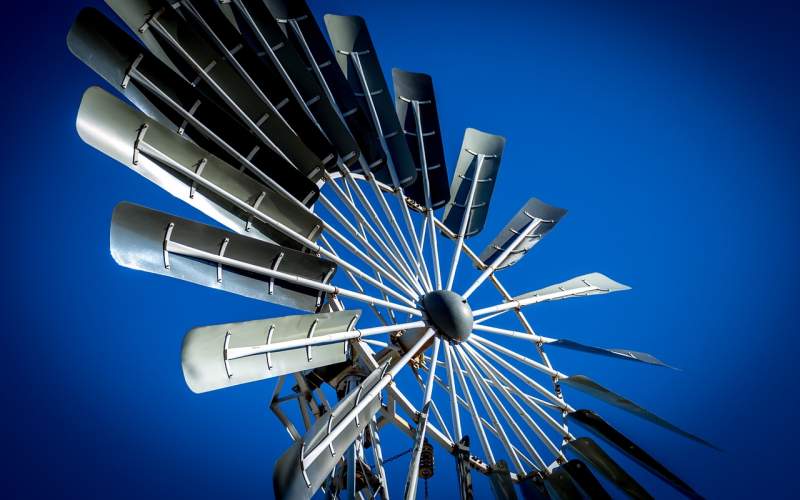Does it make sense to use wind power in Montgomery County?
As the threat of global warming becomes more apparent, the need to reduce the consumption of fossil fuels is becoming more urgent. Fortunately, there are renewable and clean energy resources that you can choose from. Wind energy is one of them.
If you have enough wind and tall towers are allowed in your area, you might want to consider installing a wind power system. However, there are some factors you need to consider before determining whether wind power works for you.
How The Home Wind Power System Works
A home energy system (usually called a “turbine”) is typically made up of a rotor, a tail, a tower, wiring, and a generator installed on a frame. It also has “balance of system” components which usually include inverters, batteries, and controllers.
The spinning rotor blades capture the kinetic energy of the wind. The energy drives the generator which produces electricity. The inverter makes the electricity usable by converting it to the right voltage. Then, the electricity can either be used or sent to the power grid. Excess electricity is stored in batteries.
The Pros and Cons of Using Wind Power in Montgomery County
As with all renewable energy options, there are pros and cons that you need to weigh before you decide to invest in a wind energy system. Here are some worth considering:
Pros:
- It is clean and renewable. It generates electricity without emitting greenhouse gasses, which are responsible for climate change. Unlike fossil fuels, wind energy doesn’t produce air pollutants, which create smog that cause respiratory diseases and trigger asthma attacks.
- It is cost-effective. Wind is an abundant and free resource. Maintaining the turbines is inexpensive. You can even sell excess electricity back to the grid to defray the maintenance costs. If you live in a remote area, it can also help you avoid the high costs of power line extension.
- You can get grants, tax credits, and rebates for using wind power in Montgomery County. The government has passed laws to incentivize the use of renewable energy sources. For more information about these incentives, go to the Maryland Energy Administration webpage.
- It helps you gain energy independence. With wind energy, you’ll reduce your reliance on fossil fuels like oil and natural gas, which are sourced from other countries. Some of these countries are now unstable, which makes energy independence all the more important to us.
Cons:
- It is not a consistent energy source. Air speed and flow varies from day to day. In other words, some days are windy and some days aren’t. If the wind is too strong or too weak, the wind energy system may not even produce electricity. However, you can remedy this problem by storing excess energy in batteries and/or pairing wind energy with solar energy.
- Your neighbors might not like it. Most wind turbines produce ambient noise. However, according to the US Department of Energy, it’s “not a significant source of noise under most wind conditions.” Also, some people find wind turbines aesthetically unappealing and this could lower the value of your home.
- The installation cost is expensive. According to the Pacific Northwest National Laboratory, the average cost of a wind energy system is $8,300 per kilowatt. However, you can recoup your investment through savings on utility bills and selling excess power to the grid. You may also be able to get financing from Property Assessed Clean Energy (PACE) Program for the upfront costs.
Is Wind Energy Right for You?
Installing a wind energy system requires specialized planning and maintenance. It’s not a DIY job. You’ll need to hire a professional to do it. Before you hire someone, you have to make sure that wind energy systems are allowed in your area.
To find out if wind energy is right for you, follow the steps below:
- First, check your wind resources. You need to make sure that there is enough wind in your area to make your energy system work. Start by checking the wind energy maps and data on the U.S. Office of Energy Efficiency and Renewable Energy website. You can hire a professional to take accurate readings on the elevation where you intend to install your wind power system. However, it will set you back between $600 to $1,200.
- Contact your planning board or local building inspector. Ask about permits and requirements. Then, find out what rules and regulations you need to follow (including height limits) when installing and maintaining wind energy systems.
- If you have neighbors or if you’re in a community with a homeowner’s association, talk to them regarding your plan. Find out if they have issues regarding the aesthetics and noise level of a wind turbine. Be ready to address their concerns.
- Calculate the costs. Compare your current electrical expenses to the cost of installation and the amount you stand to save when you use wind power. Also, make sure to determine how long you’ll be able to regain your investment. The cost of installation depends on local zoning, permitting, and utility interconnection requirements. A professional turbine installer can help you estimate the costs.
Conclusion
Wind power is a good source of renewable energy. However, it’s not for everyone. There are several things to consider before investing in a wind power system. The initial outlay is quite significant, so make sure that the potential gains are worth the investment.
If you need more information about wind power, you can read the Small Wind Guidebook on Energy.gov.






